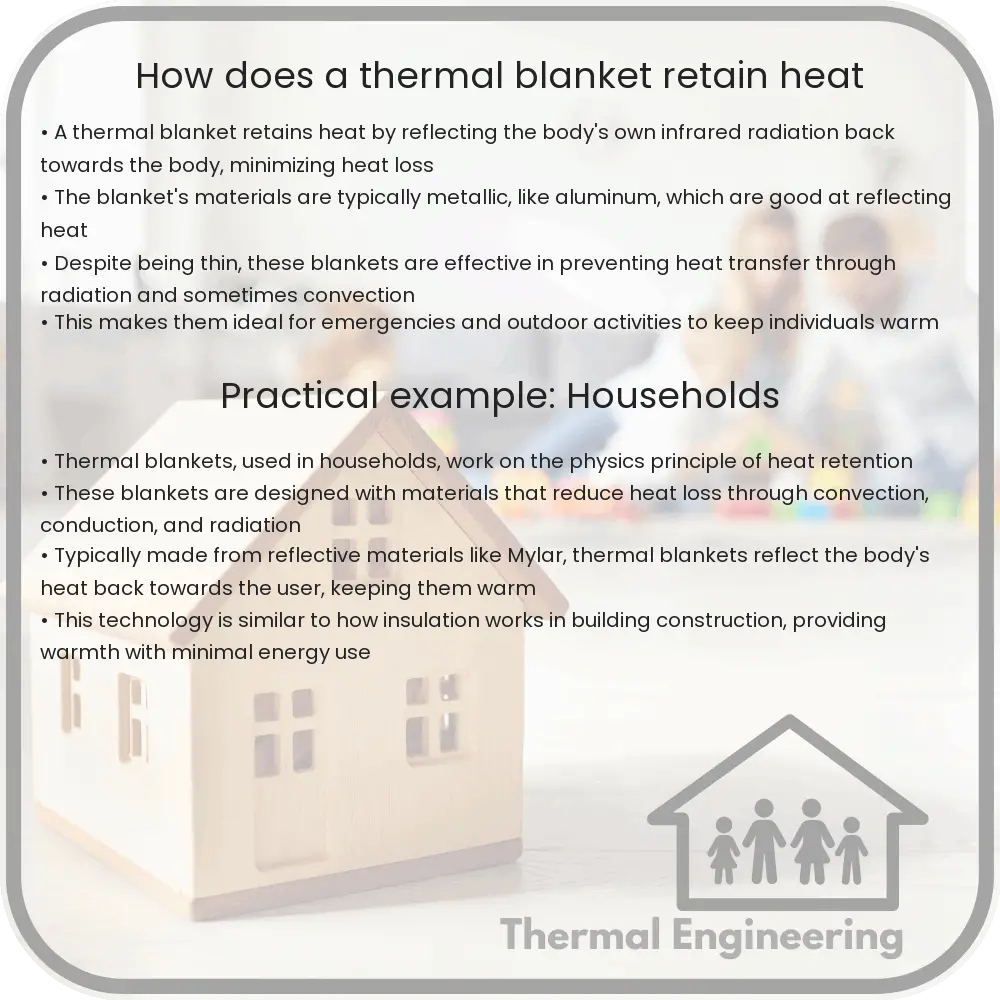Learn the science behind thermal blankets’ heat retention through reflection, reduced convection, and conduction control; a real-world thermodynamics application.

Understanding How a Thermal Blanket Retains Heat
Thermal blankets, also known as space blankets, are not just essential during camping trips or in emergency kits; they also serve as a fascinating example of engineering applied for heat retention. This article explores the mechanisms through which thermal blankets keep individuals warm by reflecting body heat and reducing heat loss.
The Material of a Thermal Blanket
Thermal blankets are typically made from a plastic substrate coated with a metallic reflecting agent like aluminum. The thickness of the film is usually only a few microns, akin to lightweight plastic wraps. This design is intentional to reflect back heat radiation while being extremely lightweight and portable.
How Heat is Retained
- Radiation Reflection: One of the primary mechanisms by which thermal blankets retain heat is by reflecting infrared radiation. Human bodies naturally emit heat in the form of infrared radiation. The metallic surface of the blanket reflects this radiation back towards the body, thereby reducing heat loss.
- Reducing Convection: By wrapping a thermal blanket around the body, the movement of air (and thus heat carried by the air) around the body is minimized. This reduction in air movement (convection) helps in keeping the body warmer for a longer period.
- Conduction Limitation: While the thin material might not seem robust, it effectively reduces the heat lost through conduction due to its low thermal conductivity. The thin layers of metal and plastic provide a barrier that slows down the rate at which body heat escapes into the colder external environment.
The Science Behind It
The principle underlying thermal blankets is primarily based on the laws of thermodynamics, specifically the principles of heat transfer. Heat can be transferred in three ways: conduction, convection, and radiation. Conduction involves direct contact, convection involves fluid or air, and radiation occurs through electromagnetic waves.
Since radiation is a key route through which body heat is lost, a thermal blanket’s ability to reflect infrared radiation is crucial. This functionality hinges on the properties of the metal coating. Metals are excellent reflectors of infrared radiation due to their free electrons that scatter radiative energy.
Real-world Applications
While commonly seen in survival kits or used after marathons, the technology behind thermal blankets is also utilized in other domains:
- Aerospace: Thermal blankets are used to protect spacecraft from extreme temperatures in space, where temperature differentials can be extreme.
- Building Insulation: Reflective thermal insulation in buildings operates on the same principle by keeping indoor environments warm in winter and cool in summer.
- Medical Field: Used to prevent hypothermia in patients post-surgery or in those who have suffered severe trauma.
In conclusion, the efficiency of a thermal blanket in retaining heat is primarily attributed to its material properties and design, which reflect back body heat while minimizing heat loss through convection and conduction. This simple yet effective solution showcases a practical application of thermodynamic principles, proffering lessons on how understanding basic science can lead to significant real-world applications.